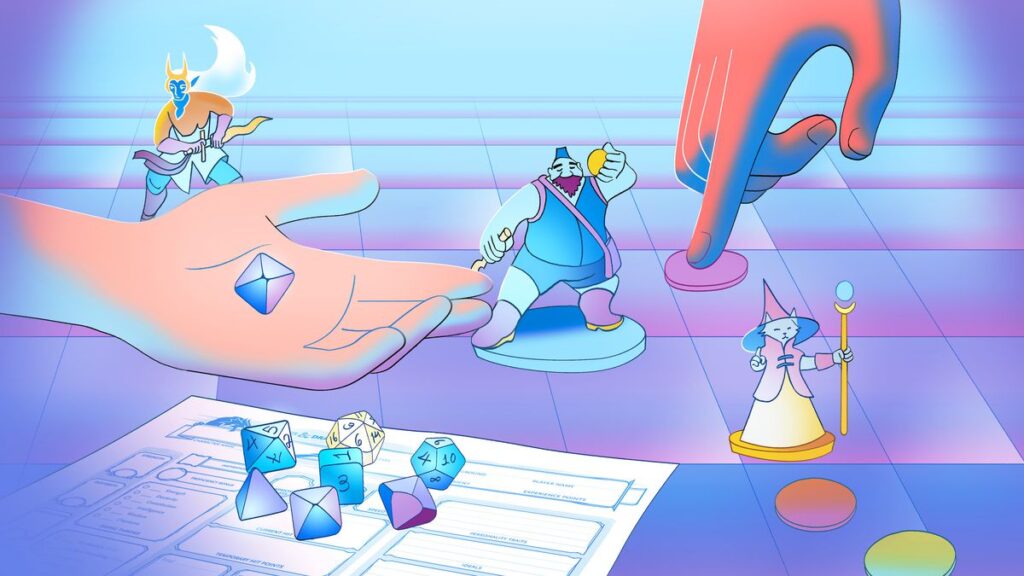Dungeons and Dragons is a fantasy tabletop game that involves collaborative storytelling adventures. The game is perfect for anyone, regardless of age or experience level. Beginners can start by understanding the game mechanics, creating a character that suits their interests and play style, and collaborating with the Dungeon Master to fit into the game’s story. Players should work together, communicating ideas and strategies while having fun playing the game. Dungeons and Dragons is enjoyed worldwide and has provided millions of players with fantastic adventures, excelling in the challenge of one’s imagination and creativity.
A Beginner’s Guide to Dungeons and Dragons: How to Start Playing Today
Dungeons and Dragons, also known as D&D, is a fantasy tabletop game that has been captivating players since its creation in 1974. The game is a collaborative storytelling adventure, where players create their own characters and embark on quests to defeat foes, explore new locations, and uncover treasure. Dungeons and Dragons is a game that can be enjoyed by anyone, regardless of age or experience level. Here is a beginner’s guide to getting started with Dungeons and Dragons.
Understanding the Game Mechanics
Dungeons and Dragons is played using dice, character sheets, a rulebook, and an imagination. The game is usually played with a group of players, led by a Dungeon Master (DM), who controls the story and describes the events that happen in the game. Each player creates their own character by choosing a race, class, and background, and then assigning points to various attributes such as strength, dexterity, intelligence, and charisma.
Once characters are created, the game begins with the DM setting the scene and describing the world around them. Players take turns making choices and rolling dice to determine the outcome of their actions, often working together to solve puzzles, overcome obstacles, and fight villains. The DM determines the success or failure of these actions based on various factors, such as the character’s ability scores and the difficulty of the task at hand.
Choosing a Character
The first step to playing Dungeons and Dragons is to create a character. There are a variety of different races, classes, and backgrounds to choose from, each with their own unique abilities and skills. Some popular choices include humans, elves, wizards, and warriors. It’s important to choose a character that suits your play style and interests, as you will be spending a lot of time playing as them.
Once you have chosen your character, you will need to assign points to various attributes, such as strength, dexterity, intelligence, and charisma. These attributes will determine how well your character performs various tasks, such as combat, spellcasting, and social interactions. It’s important to choose attributes that suit your character’s personality and abilities, as well as the role they will play in the game.
Creating a Story
The next step in playing Dungeons and Dragons is to create a story. The Dungeon Master is responsible for setting the scene and describing the world around the players. They will need to create the plot, the setting, and the characters that the players will encounter on their journey. A good story should be engaging, challenging, and allow players to make choices that impact the outcome of the game.
As a player, it’s important to work with the DM to create a character that fits into the story. You should consider the setting, the plot, and the types of challenges the party is likely to encounter when creating your character. A good character is one that has a backstory, motivations, and goals that they are working towards, which makes them more interesting to play and adds to the overall story.
Playing the Game
Once your character is created and the story is established, it’s time to start playing. Dungeons and Dragons is a game that is played in rounds, with each player taking turns to move, make actions, and roll dice. The DM will guide the players through the story, describing the world, and the actions of NPCs (non-player characters) that they encounter.
It’s important to remember that Dungeons and Dragons is a collaborative game, and players should work together to solve puzzles, overcome obstacles, and defeat enemies. Communication is key, and players should be encouraged to discuss their ideas and strategies with each other, as well as with the DM.
Tips for Beginners
Here are some tips for beginners to help get started with Dungeons and Dragons:
- Read the rulebook and familiarize yourself with the game mechanics
- Create a character that suits your play style and interests
- Work with the DM to create a character that fits into the story
- Ask questions and communicate with the DM and other players
- Be open-minded and willing to try new things
- Have fun and enjoy the game!
Conclusion
Dungeons and Dragons is a game that has been enjoyed by millions of players around the world for over four decades. It’s a game that can be played by anyone, regardless of age or experience level. By understanding the game mechanics, choosing a character, creating a story, and playing the game, you can embark on a thrilling adventure that will challenge your imagination and creativity. So grab your dice, gather your friends, and start playing Dungeons and Dragons today!
